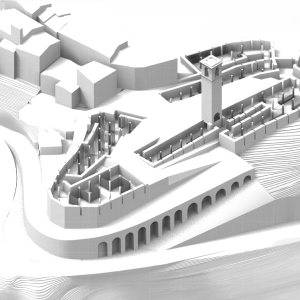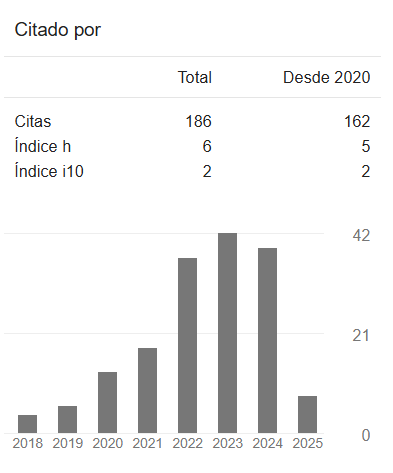Disclosing the landscape
Abandoned villages and tourism perspectives
DOI:
https://doi.org/10.35305/23626097v11i20.455Keywords:
heritage, cultural tourism, landscape transformations, soil architecture, post-earthquakeAbstract
As part of the debate on the inner areas of Italy, villages are assumed as cornerstones in the historical construction of the territory; they are recognized as a patrimonial value since they express a relationship between human settlements and contextual specificities. Depopulation and abandonment in these places are recurrent phenomena which have been deepened by recent seismic events damaging the building heritage. Reading and interpreting these phenomena require a shift of perspective that leads to attributing new values to villages in order to transform them into spaces of opportunity and potential future project which prefigure alternative economies such as tourism. An architectural vision -based on the analysis and design of buildings and urban relations- can be complemented by a landscape vision revaluing villages throughout the ancient and contemporary territory. The village of Arquata del Tronto, which is considered one of the most beautiful among those located along the Apennine ridge in central Italy, was razed to the ground by the 2016-17 earthquake. What remains is its sediment, the imprint of an architectural work perfectly adapted to geography, an embankment from which the landscape may be observed. The spur of sandstone as geographical figure is associated with the idea of a platform as architectural figure; this is a possible theme for landscape design experimentation.
Downloads
Metrics
References
Battistrada, M. (1923). Paesaggi marchigiani. Arquata del Tronto. Rassegna marchigiana per le arti figurative le bellezze naturali e la musica. (Fas cículo V). Pesaro, Italia: Arti grafiche G.Federici
Borghi, E. (2017). Piccole Italie. Le aree interne e la questione territoriale. Pomezia, Italia: Donzelli.
Bukvic, D. (2023). Beyond the quake (Tesis de doctorado). International School of Advanced Studies, Universidad de Camerino, Italia.
Chillida, E. (2005). Escritos. Madrid, España: La Fábrica Editorial.
Cipolletti, S. (2020). Restart from the landscape. Strategies to reactivate tourism in the Central Italy territories affected by the earthquake. En R. Pié et al. (Eds.), TOURISCAPE2 Transversal Tourism and Landscape, Conference Proceedings, 5-6 Novembre 2020 (pp. 161-175). Barcelona, España: UPCommons.
Cipolletti, S. y Gabbianelli, A. (2021). The post-disaster temporary landscape. Reflecting on housing and tourism practices in the crater of Central Italy. SMC MAGAZINE, 2(5), 16-19.
Coccia, L. (2005). L’architettura del suolo. Florencia, Italia: Alinea.
Convención Europea del Paisaje (Octubre 20, 2000). Recuperado de https://www.premiopaesaggio.beniculturali.it/convenzione-europea-del-paesaggio/
Corboz, A. (1983). Il territorio come Palinsesto. Diogene, (112), 14-35.
Cucinella, M. (Ed). (2018). Arcipelago Italia. Progetti per il futuro dei territori interni del Paese. Macerata, Italia: Quodlibet.
De Rossi, A. (Ed.). (2018). Riabitare l’Italia. Verona, Italia: Donzelli.
Dolci atmosfere d'Italia: l'associazione “I Borghi più belli d'Italia”. Recuperado de https://borghipiubelliditalia.it/club/
ICOMOS International Charter for Cultural Heritage Tourism (2022): Reinforcing cultural heritage protection and community resilience through responsible and sustainable tourism management. Recuperado de https://www.icomos.org/images/DOCUMENTS/Secretariat/2023/CSI/eng-ita_ICHTCharter.pdf
INTERNATIONAL CULTURAL TOURISM CHARTER (1999). Managing Tourism at Places of Heritage Significance. Recuperado de https://www.icomositalia.com/_files/ugd/57365b_aee47329a3e34675b6ed97e5cc0bdd4e.pdf
Isozaki, A. (1997). Fratture. Lotus, (93), 36.
Janés, C. (2008). La indetenible quietud: en torno a Eduardo Chillida. Madrid, España: Siruela.
Lalli, G. (2019). Settecento arquatano storie, fatti, misfatti. Colonnella, Italia: Grafiche Martintype.
Lanzani, A. y Curci, F. (2018). Le Italie in contrazione, tra crisi e opportunità. En A. De Rossi (Ed.), Riabitare l’Italia (pp. 79-107). Verona, Italia: Donzelli.
Milani, R. (2017). Ontologia del rappresentare. Domus, (1009), 46-47.
Piccinato, L. (1993). Urbanistica medievale. Bari, Italia: Edizioni Dedalo. (1º ed. 1978)
Piovene, G. (1957). Viaggio in Italia. Milán, Italia: Arnaldo Mondadori Editore.
Rossi, A., Consolacio, E. y Bosshard, M. (1985). La costruzione del territorio. Milán, Italia: Clup.
Turri, E. (1979). Semiologia del paesaggio italiano. Milán, Italia: Longanesi.
Turri, E. (2008). Antropologia del paesaggio. Verona, Italia: Marsilio. (1º ed. 1974)
Traldi, L. (2016). Daniel Libenskid: momento nero ma sono positivo. La Repubblica. Recuperado de https://www.designatlarge.it/daniel-libeskind-intervista-repubblica/
Utzon, J. (1962). Platforms and Plateaus: Ideas of A Danish Architec. Zodiac, (10),114-117.
Venezia, F. (1990). Scritti brevi. Nápoles, Italia: Clean.
Venezia, F. (2017). Un impegno oltre il terremoto. Domus, (1011), 45.

Downloads
Published
How to Cite
Issue
Section
License
Copyright (c) 2024 A&P Continuidad

This work is licensed under a Creative Commons Attribution-NonCommercial-ShareAlike 4.0 International License.
Open access policy
A&P Continuidad is a non-profit and open access publication. According to Mexico Declaration on Cultural Policies, the journal distribution is submitted to Creative Commons Attribution-Noncommercial-ShareAlike 4.0 International Public License (CC BY-NC-SA). “Neither the commercial use of the original work nor that of the possible derivative works are allowed. The distribution of derivative works should be submitted to the license regulating the original work. This license is not free.”
A&P Continuidad authorizes the partial or full reproduction of texts and graphs provided that the source is cited. Authors are exclusively responsible for the criteria expressed in the articles which do not necessarily reflect the opinion of the Editorial Committee or that of the Direction Board. The copyright of the published articles pertains to their authors or publishers.
Transfer of rights
The acceptance of an article to be published implies the author’s transfer of rights to the journal. Authors continue to have the right to use the material in future books or publications, approve or veto the republication of their works as well as the rights related to patents or other rights. Transfer of rights form may be downloaded here.





























 This OJS site and its metadata are under a
This OJS site and its metadata are under a 

